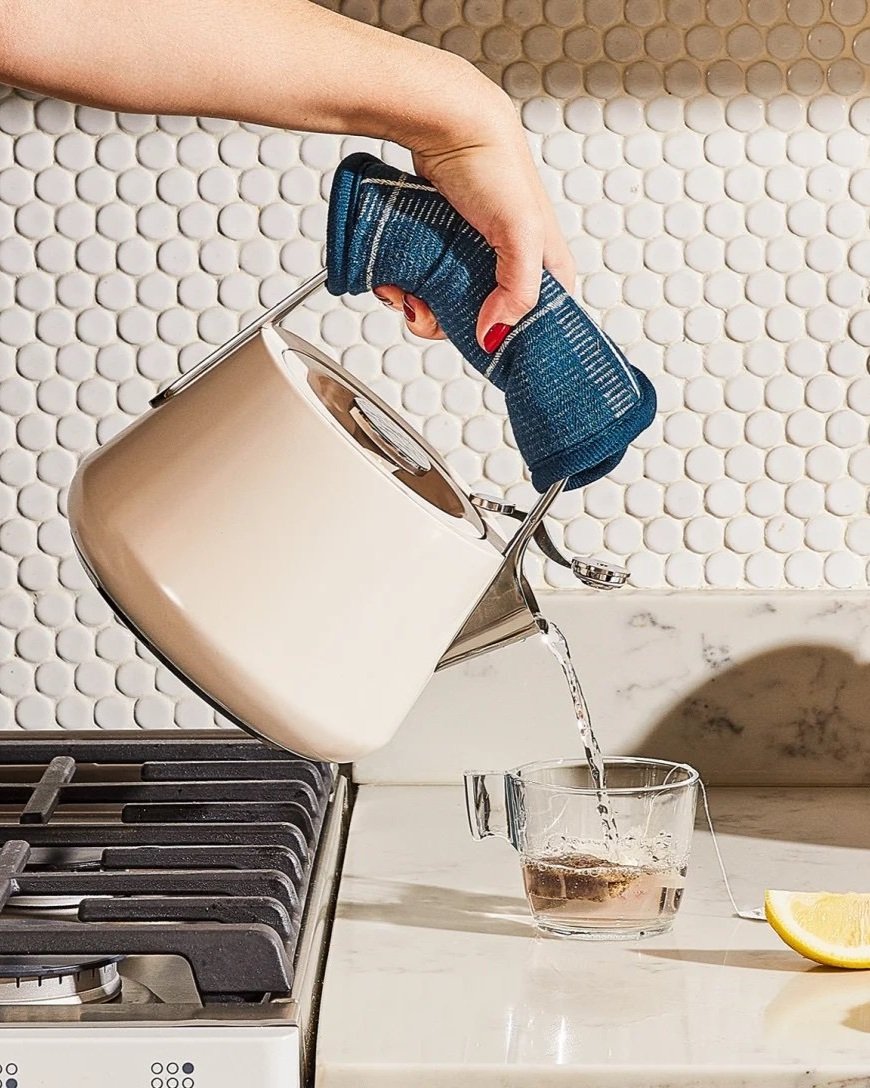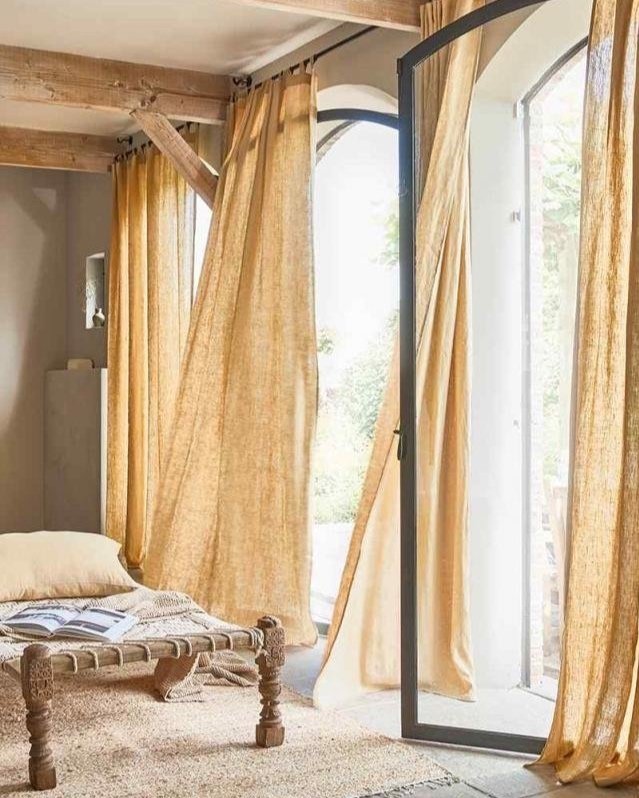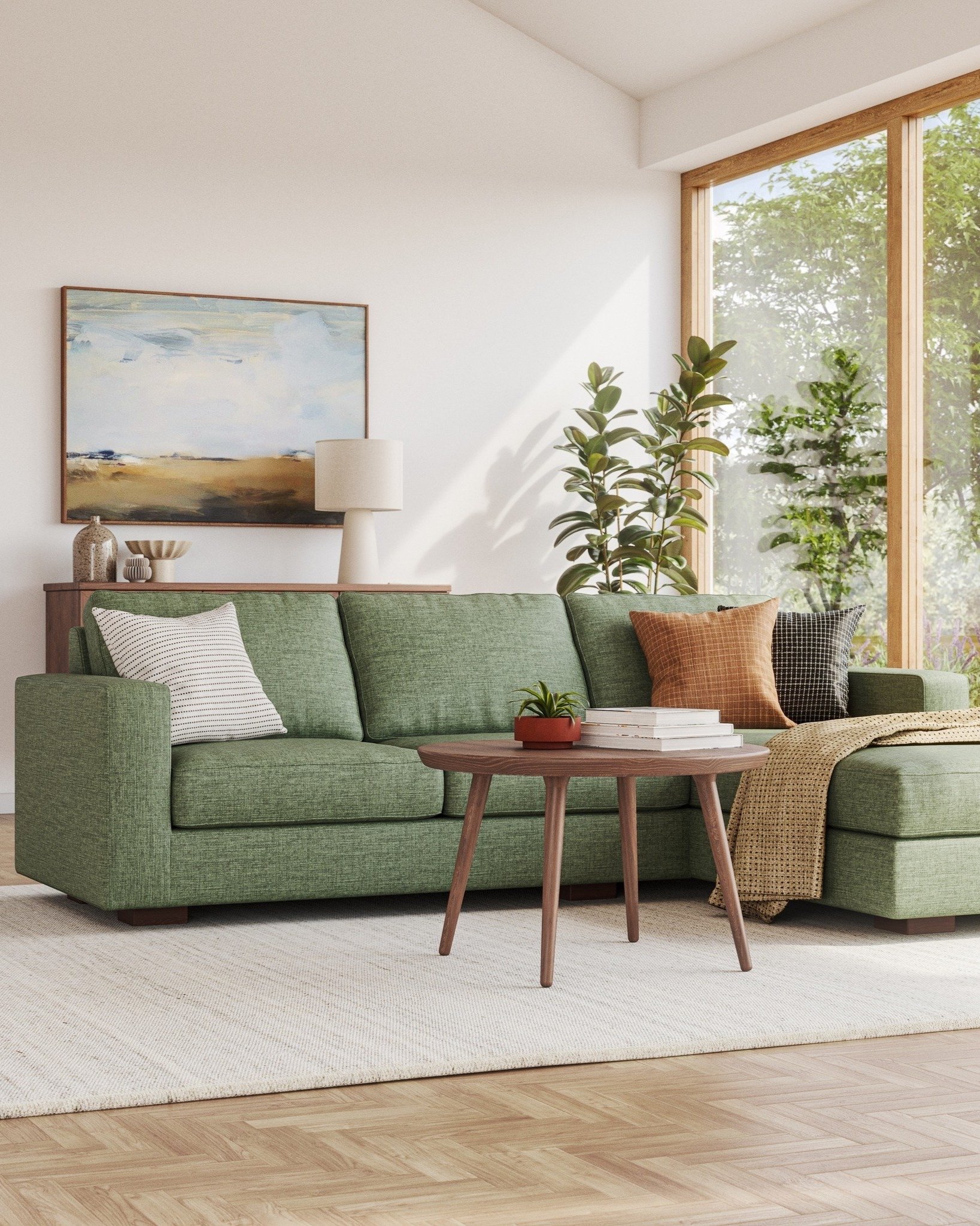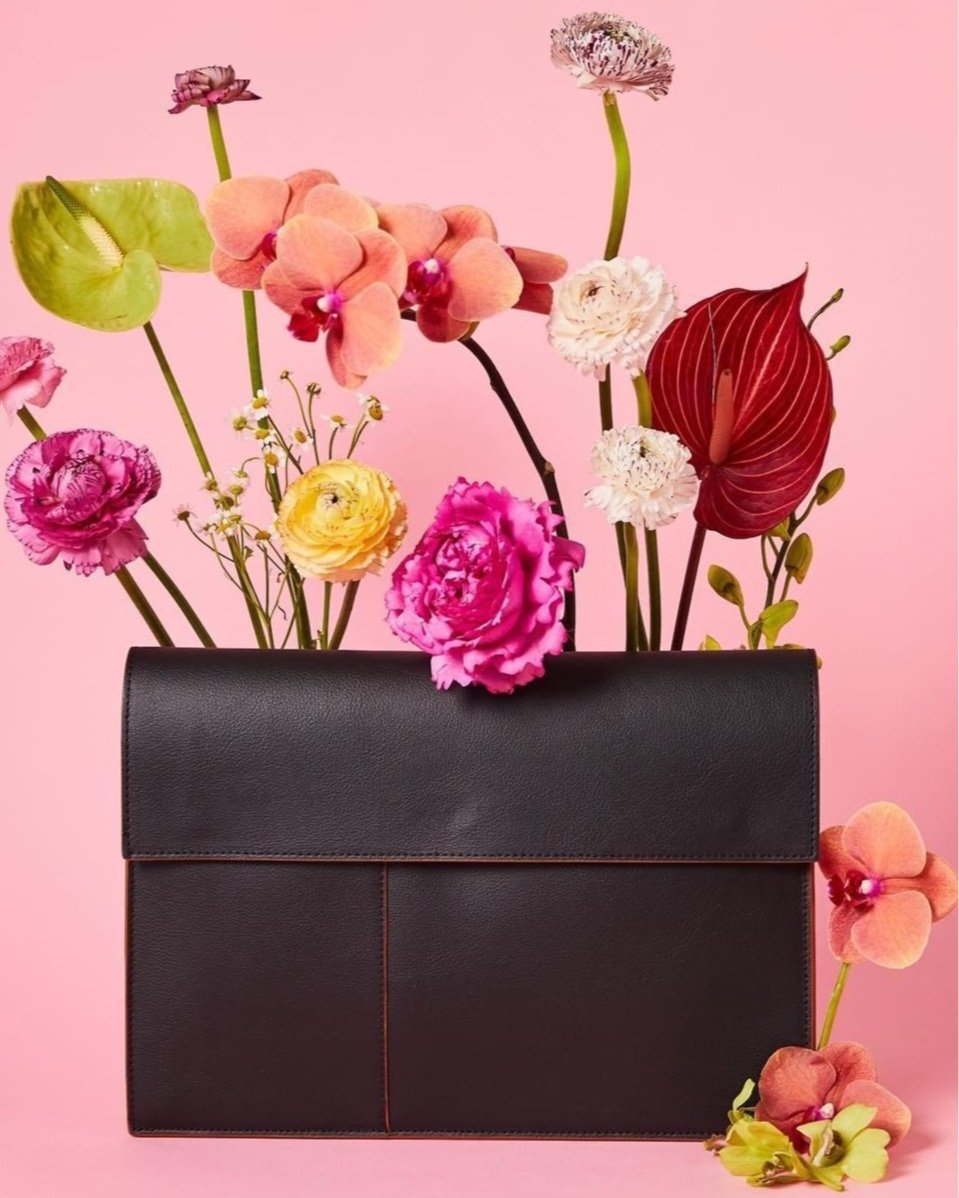How to Source Sustainable Wall Art for Your Home
Image: Opposite Wall
Traditionally, wall art isn’t associated with sustainability. After all, making art requires creating something new, which often means relying on materials like paper, canvas, and paints—not to mention the shipping and global distribution methods that get art from the creator to the buyer. Many pieces of art are also mass-produced in warehouses, far from the original creator, then sold in chain stores like Target or Marshalls.
However, just like other home products, wall art is having a sustainable renaissance. From repurposed materials to ethical production, more sustainable wall art exists than ever before. But what makes a piece of art sustainable can vary greatly. Here’s what to watch for when seeking more sustainable wall art, plus a few tips and tricks for sourcing beautiful, eco-friendly decor you can feel good about.
What is Sustainable Wall Art?
There are many ways in which a piece of art can be sustainable (or not). For example, a painting could have an eco-friendly frame, but paint that’s toxic to the environment. Or, a photo could be printed on repurposed canvas, but packaged in large amounts of plastic.
Sustainability in art is important because the industry is booming. Online art sales doubled between 2019 and 2020, and the industry only continues to grow, according to Artland Magazine. Despite the increase in sales—which correlates with a boost in consumption—digital artworks occupy an increasing portion of profits. Meanwhile, industry leaders have become more concerned with topics like sustainable travel, as well as the ecological impact of art festivals and events.
The bottom line? It’ll be hard to find a piece of art that meets every standard for sustainability. Here’s a look at what criteria to consider when buying art for your home, and how to decide which eco-friendly factors matter most to you.
Image: Opposite Wall
Art Materials
Companies committed to manufacturing sustainable wall art will pursue standards that verify their materials and mediums. For example, Opposite Wall is a wall art, wallpaper, and frame vendor committed to producing forest-friendly materials. Their posters are printed on paper certified by the Forest Stewardship Council® (FSC®), and their wooden frames are also certified. Another certification to watch for comes from the Sustainable Forest Initiative, or SFI. Art with this label has been verified by the SFI as using sustainably-harvested materials (primarily wood fibers) that foster conservation and promote smart climate solutions.
Art production companies can also have their own, more localized sustainability initiatives. Artifact Uprising, a photo printing company based in Colorado, uses wood reclaimed from trees that have fallen due to beetle infestation. Clearing this wood for reuse allows new trees to grow and prevents healthy trees from being cut down for materials. Artifact Uprising uses the wood for creative wall art, including wood calendars and wood blocks as photo displays. They also use 100% post-consumer recycled paper in all of their photo prints. These reused materials also have unique character, such as blue streaks in the beetle pine, ensuring a truly unique, customized, and sustainable piece of wall art for your home.
Image: Photowall
Giving Back Initiatives
Aside from using eco-friendly materials, some art vendors go the extra mile by donating back to forestry and other climate initiatives. This is the case with Photowall. In addition to making every mural to order, this photo printing and mural company donates proceeds to Vi Agroforestry after every purchase. These donations support the planting of 5,000 trees and crops in South Africa. These efforts not only improve local climates through carbon capture, but also help local residents access healthy food while improving the quality of their lives through sustainable agriculture.
Another way to give back through your art purchase is with Andy okay. This organization lets buyers choose which organizations they’d like to support with their purchase, including earth-friendly causes like PangeaSeed Foundation and World Wildlife Foundation. Not to mention the additional sustainability efforts of Andy okay, which include climate-neutral printing facilities and local production at your nearest facility (which cuts down the carbon footprint of distribution). Andy okay also utilizes corporate social responsibility practices at each facility, which includes LED lighting, recycling programs for ink, and other aspects of daily operations.
Additionally, if you’re looking for wall art beyond a painting or print, consider the Artist Plate Project by Artaware. This organization supports the Coalition for the Homeless, the nation’s oldest advocacy and direct service organization helping individuals and families experiencing homelessness. These limited-edition dinner plates are designed by over 40 world-renowned artists and provide food, housing, and other critical services to those in need through The Coalition for The Homeless.
Image: Photo Innovation Lab
Ethical Production Practices
It can be difficult to see behind the scenes of an art company’s production facility, but one way to ensure sustainable practices is to find something that’s made-to-order. This means that the artist doesn’t produce or print the piece until it’s been purchased, which cuts down on excess inventory (which usually winds up as landfill waste).
Photo Innovation Lab makes high-quality made-to-order prints on sustainable papers and fabrics. Some of their materials are made on tree bark substrates; others, such as their cotton, are made in facilities that run 100% on wind energy. They also leverage water-based paints and pigments in their prints and avoid plastic in their production, which ensures less toxicity and enables the product to be recycled post-use. Note: many photo papers are coated in resin polymers or use other brightening agents, which, while adding shine, make it so the prints cannot be recycled.
Image: Kincaid Galleries
Earth-Friendly Distribution
Shipping is another factor to consider when sharing wall art. The Gallery Climate Coalition is an international community of arts organizations who work together to help reduce the overall impact of the arts sector. This goal is achieved through a variety of initiatives, such as providing industry-specific guidance on sustainability, lobbying for systemic change, and fundraising for core environmental initiatives. To support the gallery climate coalition and its efforts, you can visit their members page, to see which organizations are working alongside them to make the creation, selling, and displaying of art more sustainable.
Another sustainable art vendor is Kincaid Galleries, which takes 100% of responsibility for maintaining eco-friendly practices throughout its photography production line. Owned by photographer John Kincaid, this gallery offers a range of sustainable, fine art photo prints with tropical, vacation and travel themes. Their sustainable practices include using handmade frames with wood sourced from reforestation projects. When shipping, they also use biodegradable packing peanuts and 100% recyclable cardboard boxes, ensuring a low-waste art production cycle.
Image: ART FOR CHANGE
Artisan Support
You can also make a difference with your art by choosing organizations that give back to local artists and communities. For example, ART FOR CHANGE provides support for contemporary artists by selling their hand-signed work at manageable prices. ART FOR CHANGE allows collectors to discover new and emerging artists and become their patrons through the platform. They also seek to make art buying more accessible, helping both the artist and the buyer.
The Little Market is another great place to find wall art that supports local artisans. From woven baskets to macrame wall hangings, each purchase offers information from the artists who made the piece. For example, The Little Market works with The Jute Works to empower women in Bangladeshi communities through handicraft production, job training, and leadership skills. The Little Market has other ethically-made home accessories to compliment your wall art collection, such as throws and candles.
Local Art
Lastly, look to your community for ways to support local artists near you. One idea is to research open studios near you, which is a time when local artists will allow an open tour of their workspaces. These artists will usually have art for sale; additionally, it’s a great chance to learn about their process and projects, and follow their newsletter to stay up-to-date on sales and events where you can buy their art. Similarly, local art fairs are a great way to support artists in your community. Many cities and towns host art fairs year-round; furthermore, online art fairs allow you to discover artists in other towns, or even around the world.
These are also great methods to use when you’re traveling, as a way to give back to the artists in the communities you visit.
Whether you’re just looking to decorate your home sustainably, or you want a more eco-friendly way to collect and curate art, there are many ways to be more conscious when browsing and buying wall art. Just be sure to find out which issues matter most to you, whether supporting local artisans or using reclaimed wood, and look for those requirements in the art you buy. For more inspiration on sustainable home decor, checkout our roundup of brands that support ethically-styled living.
About the Author:
Michelle Polizzi is an independent writer and storyteller with 7 years of experience creating content online. Her writing has appeared in leading publications like Bitch, WELL+GOOD, Insider, and Healthline, and she covers topics like sustainable living, mental health, and intersectional feminism. Currently, she's pursuing an MFA in creative writing.
MAKE SURE TO PIN THE PHOTO BELOW TO SAVE THIS POST FOR LATER!
WANT to find MORE SUSTAINABLE BRANDS? VISIT OUR BRAND DIRECTORY!
Our Brand Directory is home to hundreds of sustainable brands, from makeup to cleaning supplies, from underwear to shoes. We have broken everything down by category for easy shopping, along with discount codes unique to Sustainably Chic viewers.






































